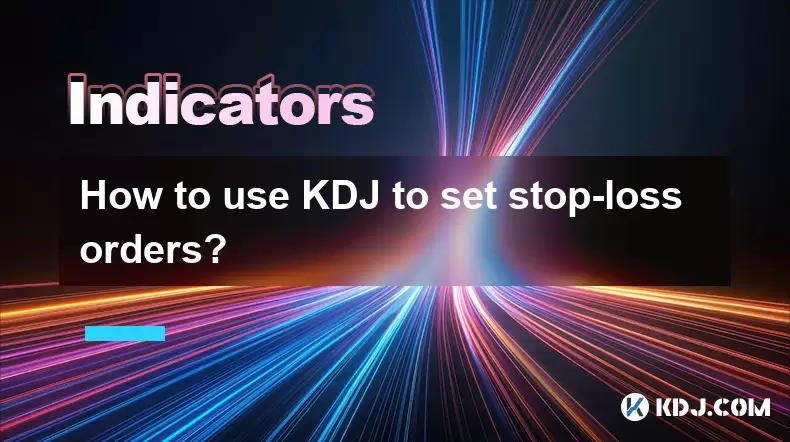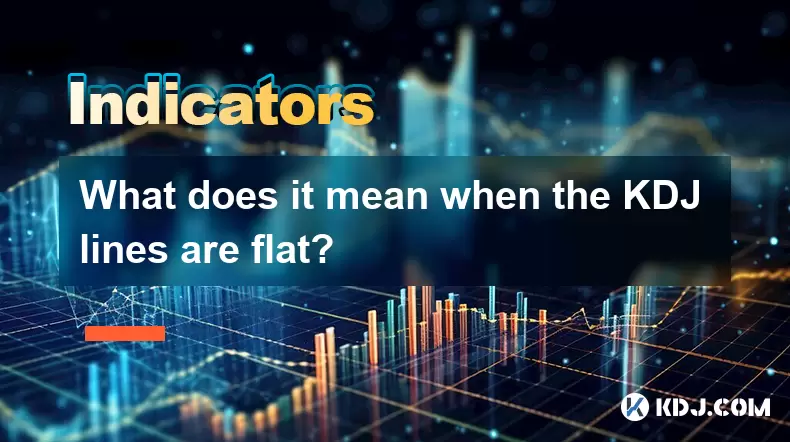-
 Bitcoin
Bitcoin $114700
-3.36% -
 Ethereum
Ethereum $3619
-6.51% -
 XRP
XRP $2.926
-7.66% -
 Tether USDt
Tether USDt $0.9998
-0.02% -
 BNB
BNB $768.6
-4.90% -
 Solana
Solana $168.2
-7.52% -
 USDC
USDC $0.9999
0.00% -
 Dogecoin
Dogecoin $0.2045
-9.02% -
 TRON
TRON $0.3243
-0.27% -
 Cardano
Cardano $0.7208
-8.45% -
 Hyperliquid
Hyperliquid $39.74
-9.17% -
 Stellar
Stellar $0.3882
-8.79% -
 Sui
Sui $3.481
-11.93% -
 Chainlink
Chainlink $16.52
-9.04% -
 Bitcoin Cash
Bitcoin Cash $556.7
-4.79% -
 Hedera
Hedera $0.2444
-11.40% -
 Avalanche
Avalanche $21.96
-8.51% -
 Ethena USDe
Ethena USDe $1.001
-0.02% -
 UNUS SED LEO
UNUS SED LEO $8.950
0.15% -
 Toncoin
Toncoin $3.425
-2.33% -
 Litecoin
Litecoin $104.4
-5.94% -
 Shiba Inu
Shiba Inu $0.00001212
-7.49% -
 Polkadot
Polkadot $3.630
-6.98% -
 Uniswap
Uniswap $9.165
-10.12% -
 Monero
Monero $306.8
-3.10% -
 Dai
Dai $0.9999
-0.01% -
 Bitget Token
Bitget Token $4.360
-3.43% -
 Pepe
Pepe $0.00001049
-9.59% -
 Cronos
Cronos $0.1352
-8.67% -
 Aave
Aave $256.5
-8.03%
What are the common mistakes to avoid when using the WMA indicator in crypto?
The WMA is a responsive crypto trading tool that prioritizes recent prices, but it risks false signals if used alone—always confirm with volume, RSI, or trend analysis. (154 characters)
Jul 31, 2025 at 08:15 pm

Understanding the WMA Indicator in Cryptocurrency Trading
The Weighted Moving Average (WMA) is a technical analysis tool used by traders to identify trends in cryptocurrency price movements. Unlike the Simple Moving Average (SMA), which assigns equal weight to all data points, the WMA gives greater importance to recent prices, making it more responsive to new information. This sensitivity can be beneficial in fast-moving crypto markets, but it also increases the risk of misinterpretation if not used correctly. Traders often rely on the WMA to spot trend direction, potential reversals, and entry or exit points. However, misunderstanding how the WMA functions or misapplying it can lead to poor trading decisions.
Overreliance on WMA Without Confirming Indicators
One of the most common pitfalls is using the WMA in isolation. Relying solely on the WMA crossovers or slope direction without cross-verifying signals with other indicators can result in false entries. For instance, a bullish crossover on the WMA might suggest an uptrend, but without confirmation from tools like Relative Strength Index (RSI) or MACD, the signal may be misleading. Crypto markets are prone to volatility and sudden reversals, so confirmation is essential.
- Use RSI to check if the asset is overbought or oversold.
- Combine with volume indicators to assess the strength behind a price move.
- Apply support and resistance levels to validate WMA signals.
Ignoring these additional layers increases the chance of acting on noise rather than genuine trend shifts.
Misinterpreting WMA in Highly Volatile Conditions
Cryptocurrencies are known for their extreme price swings, and the WMA’s sensitivity to recent data can amplify false signals during such periods. In a sideways or choppy market, the WMA may generate multiple crossover signals that quickly reverse, leading to whipsaws. Traders who act on every crossover without assessing market context may face repeated losses.
- Avoid using short-period WMA (e.g., WMA 5 or WMA 10) during high volatility unless combined with volatility filters like Bollinger Bands.
- Consider switching to a longer WMA (e.g., WMA 50 or WMA 100) to smooth out erratic price action.
- Monitor Bitcoin dominance or market sentiment to determine if the broader market is in consolidation, which affects all altcoins.
Failing to adjust WMA settings based on market conditions undermines its effectiveness.
Incorrect WMA Period Selection
Choosing the wrong period length for the WMA can distort its usefulness. A shorter WMA reacts quickly but may generate too many false signals. A longer WMA is smoother but lags behind price action, potentially causing delayed entries. There is no universal "best" period—what works for Bitcoin may not suit a low-cap altcoin.
- Test different WMA lengths using backtesting tools on historical data.
- For day trading, consider WMA 9 to WMA 20 for responsiveness.
- For swing trading, WMA 50 to WMA 200 may offer more reliable trend signals.
- Adjust based on the asset’s average volatility and trading volume.
Using a default setting without customization reduces the indicator’s accuracy.
Ignoring the Impact of Market Structure
The WMA performs differently depending on whether the market is trending or ranging. In a strong uptrend, the WMA can act as dynamic support, and price bounces off it may signal buying opportunities. In a ranging market, the WMA may crisscross the price repeatedly, offering no clear direction. Traders who apply the same WMA strategy across all market structures often face confusion.
- Use trendline analysis to confirm if the market is in an established trend.
- Apply the Average Directional Index (ADX) to measure trend strength—values above 25 suggest a trending market.
- In ranging conditions, consider using oscillators instead of trend-following tools like WMA.
Misreading market structure leads to applying the WMA in situations where it is inherently unreliable.
Failing to Adapt WMA to Different Timeframes
Using the WMA on a single timeframe without checking higher or lower charts creates a narrow view of the market. A bullish WMA signal on the 1-hour chart might contradict a bearish trend on the daily chart. This discrepancy can trap traders in counter-trend positions.
- Always analyze the daily WMA before trading on lower timeframes like 15-minute or 1-hour.
- Align short-term WMA signals with the direction of the long-term WMA to increase probability.
- Use multi-timeframe analysis to filter out low-probability setups.
Neglecting higher timeframes increases the risk of trading against the dominant trend.
Not Accounting for Crypto-Specific Risks
Cryptocurrencies are influenced by factors beyond price data, such as regulatory news, exchange outages, or whale movements. The WMA, being purely price-based, cannot account for these external shocks. A sudden drop due to negative news may break through the WMA support, but the indicator will only reflect it after the fact.
- Monitor on-chain metrics like exchange inflows or wallet concentrations.
- Stay updated on regulatory developments that could impact market sentiment.
- Use stop-loss orders to protect against black swan events, even if the WMA suggests stability.
Trusting the WMA blindly during news-heavy periods can result in significant losses.
Frequently Asked Questions
Can the WMA be used effectively in sideways crypto markets?
The WMA is less effective in sideways markets because it generates frequent crossovers without a clear trend. In such conditions, the price oscillates around the WMA line, producing misleading signals. It is better to use range-bound indicators like Stochastic RSI or Bollinger Bands when the market lacks direction.
How do I set up WMA on popular trading platforms like TradingView?
To add WMA on TradingView: Click "Indicators" at the top of the chart, search for "Weighted Moving Average," select it, and choose the desired period (e.g., 20). You can customize the color and thickness under "Settings." The WMA line will appear overlaid on the price chart.
Is WMA better than EMA for crypto trading?
The Exponential Moving Average (EMA) also emphasizes recent prices but uses a different calculation method. WMA assigns linearly decreasing weights, while EMA uses exponential decay. In fast-moving crypto markets, EMA is often preferred for its slightly smoother response. However, WMA can be more precise in detecting short-term momentum shifts if used cautiously.
Should I use WMA for scalping cryptocurrencies?
WMA can be used for scalping, especially with short periods like WMA 5 or WMA 9. However, due to high volatility, false signals are common. It is crucial to combine WMA with order book data or volume profile to confirm entries and exits during scalping sessions.
Disclaimer:info@kdj.com
The information provided is not trading advice. kdj.com does not assume any responsibility for any investments made based on the information provided in this article. Cryptocurrencies are highly volatile and it is highly recommended that you invest with caution after thorough research!
If you believe that the content used on this website infringes your copyright, please contact us immediately (info@kdj.com) and we will delete it promptly.
- Australia vs Lions: Unleashing Betting Offers and Free Bets for the Thrilling Finale
- 2025-08-01 16:30:11
- Bitcoin, Satoshi, and the Echoes of Ancient Wisdom in DeFi
- 2025-08-01 16:50:12
- ONDO Tokens: Could They Mint the Next Crypto Millionaires?
- 2025-08-01 16:30:11
- Satoshi, Meme Coins, and Substance: A New Era?
- 2025-08-01 16:50:12
- Decoding the Roar: Australia, the Lions, and the Betting Odds
- 2025-08-01 16:55:48
- Bitcoin Price Plummets Amid Trump Tariffs: A Market Sell-Off Deep Dive
- 2025-08-01 16:55:48
Related knowledge

How do I secure my private key?
Aug 01,2025 at 05:14pm
Understanding the Importance of Private Key SecurityYour private key is the most critical component of your cryptocurrency ownership. It is a cryptogr...

How does the KDJ indicator apply to decentralized finance (DeFi) tokens?
Aug 01,2025 at 04:43pm
Understanding the KDJ Indicator in Technical AnalysisThe KDJ indicator is a momentum oscillator derived from the Stochastic Oscillator, widely used in...

What is the difference in KDJ signal interpretation between a trending and a ranging market?
Aug 01,2025 at 03:56pm
Understanding the KDJ Indicator in Cryptocurrency TradingThe KDJ indicator is a momentum oscillator widely used in cryptocurrency trading to identify ...

Does the KDJ indicator work well for low-liquidity crypto assets?
Aug 01,2025 at 02:01pm
Understanding the KDJ Indicator in Cryptocurrency TradingThe KDJ indicator is a momentum oscillator derived from the Stochastic Oscillator, widely use...

How to use KDJ to set stop-loss orders?
Aug 01,2025 at 04:28pm
Understanding the KDJ Indicator in Cryptocurrency TradingThe KDJ indicator is a momentum oscillator widely used in technical analysis within the crypt...

What does it mean when the KDJ lines are flat?
Aug 01,2025 at 03:22pm
Understanding the KDJ Indicator in Cryptocurrency TradingThe KDJ indicator is a momentum oscillator widely used in cryptocurrency technical analysis t...

How do I secure my private key?
Aug 01,2025 at 05:14pm
Understanding the Importance of Private Key SecurityYour private key is the most critical component of your cryptocurrency ownership. It is a cryptogr...

How does the KDJ indicator apply to decentralized finance (DeFi) tokens?
Aug 01,2025 at 04:43pm
Understanding the KDJ Indicator in Technical AnalysisThe KDJ indicator is a momentum oscillator derived from the Stochastic Oscillator, widely used in...

What is the difference in KDJ signal interpretation between a trending and a ranging market?
Aug 01,2025 at 03:56pm
Understanding the KDJ Indicator in Cryptocurrency TradingThe KDJ indicator is a momentum oscillator widely used in cryptocurrency trading to identify ...

Does the KDJ indicator work well for low-liquidity crypto assets?
Aug 01,2025 at 02:01pm
Understanding the KDJ Indicator in Cryptocurrency TradingThe KDJ indicator is a momentum oscillator derived from the Stochastic Oscillator, widely use...

How to use KDJ to set stop-loss orders?
Aug 01,2025 at 04:28pm
Understanding the KDJ Indicator in Cryptocurrency TradingThe KDJ indicator is a momentum oscillator widely used in technical analysis within the crypt...

What does it mean when the KDJ lines are flat?
Aug 01,2025 at 03:22pm
Understanding the KDJ Indicator in Cryptocurrency TradingThe KDJ indicator is a momentum oscillator widely used in cryptocurrency technical analysis t...
See all articles

























































































